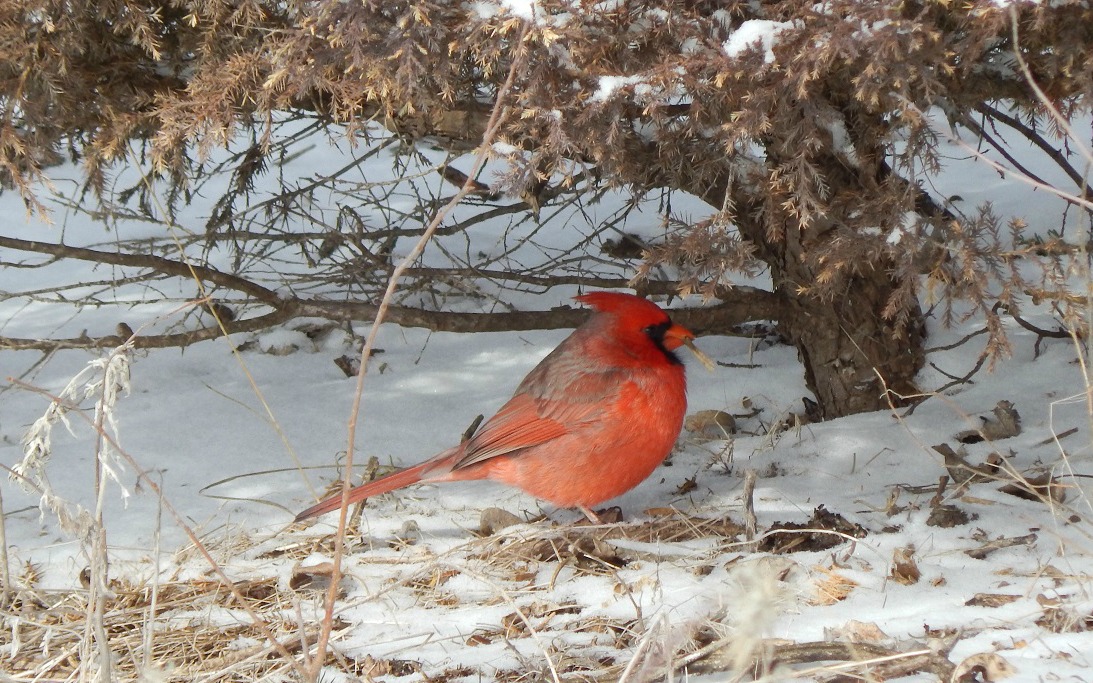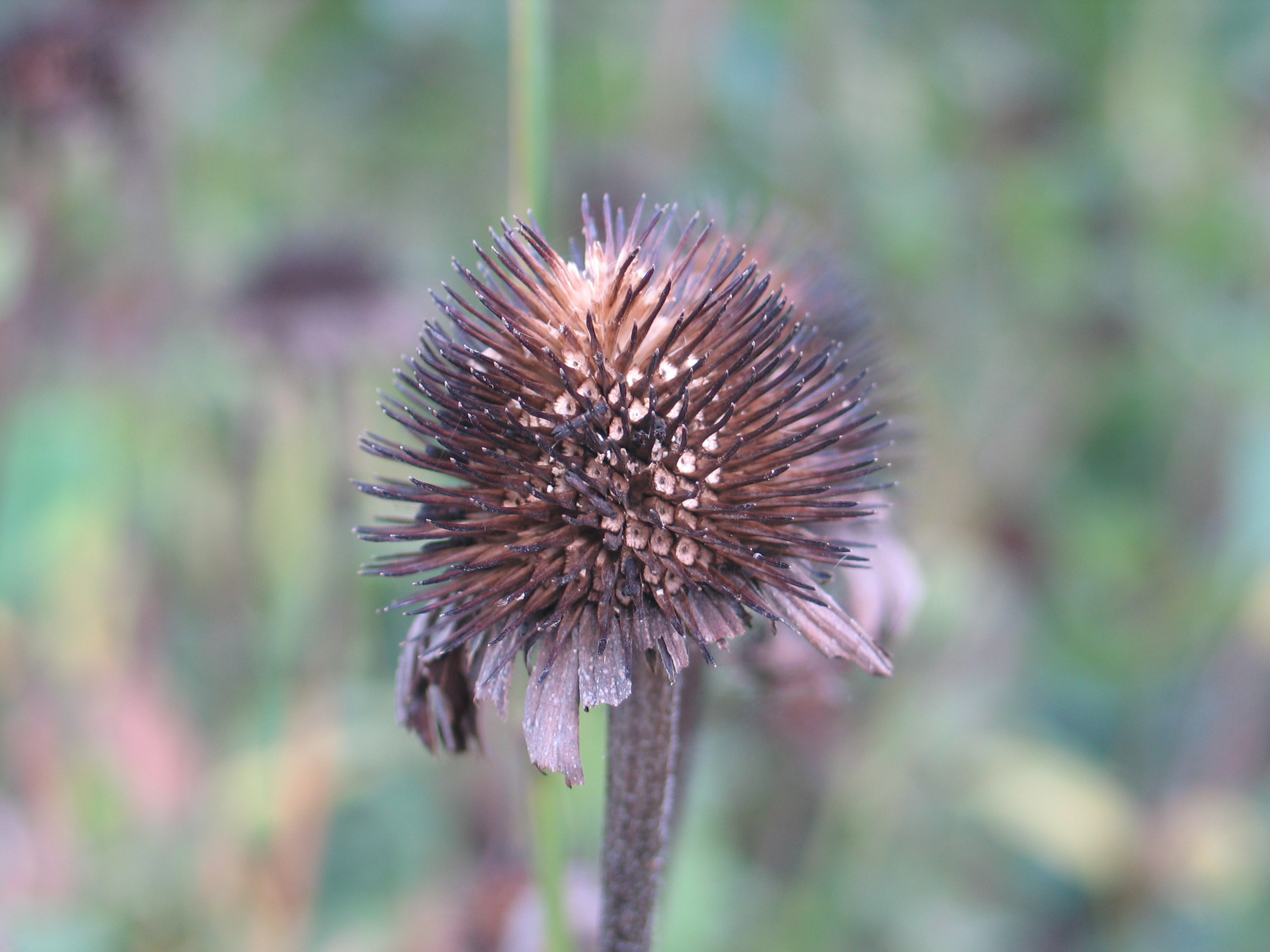If you have been walking through the Arboretum over the past few weeks, you probably noticed the deciduous holly. Ilex decidua gets so much attention because of its incredibly lustrous fruit of red, orange, and yellow. As the leaves fall away each year in November and December, the fruit magically appears and remains on the tree for most of the winter.
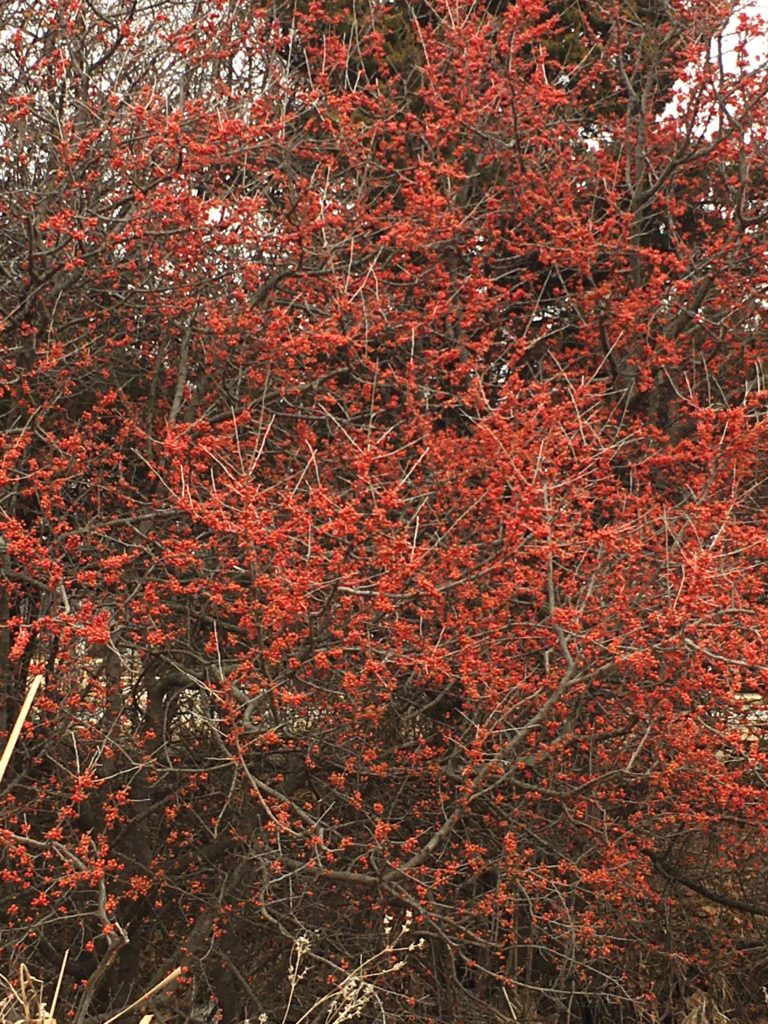
Fruit
These colorful berries are not a preferred food of birds, but become more appetizing when snow covers the ground. Often trees are completely stripped of berries in a couple days after a heavy snow, because other food sources are not readily available. Many birds, including cedar waxwings, flock to these trees to feed on the fruit later in winter.
Deciduous holly requires male and female plants to produce fruit. Tiny white flowers appear before the leaves in March and April. We have several male selections planted in close proximity to the female plants to assure the development of the attractive fruit each year. It is best to keep the fruit producing female plants in the foreground and tuck the male forms out of sight. We have used the branches with fruit cluster as holiday decorations.
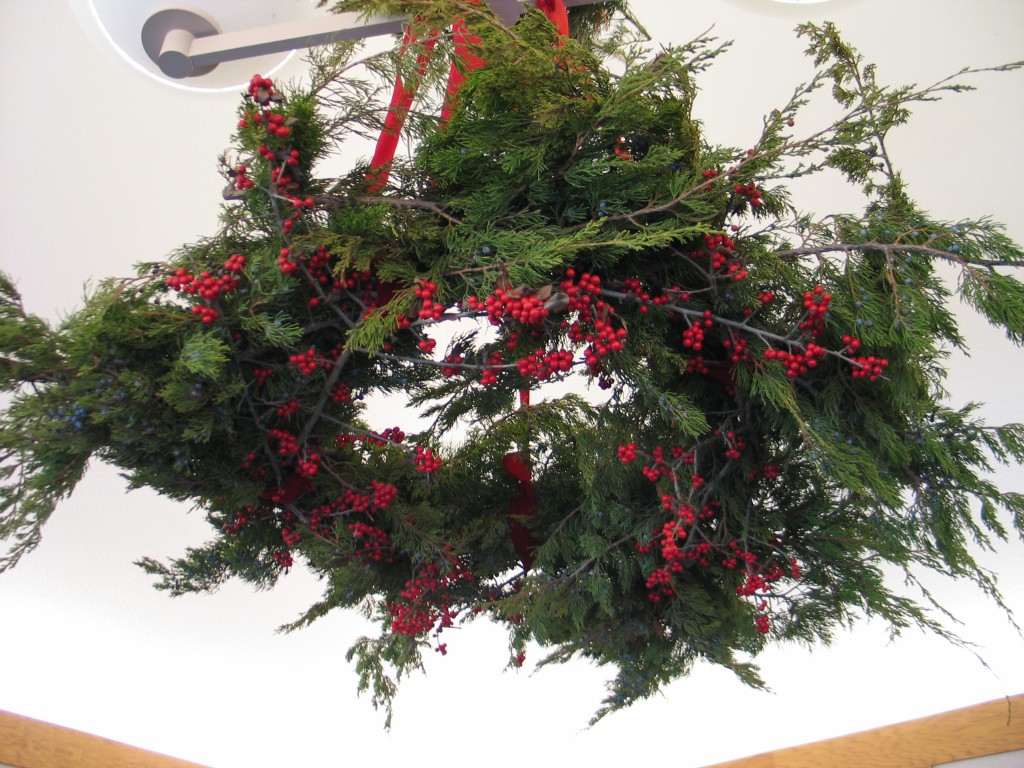
Habit and Site Preferences
Deciduous holly, or Possumhaw as it is often called, is a small tree or large shrub that grows 15-20 feet tall. The smooth gray bark of the trunk and branches hold the fruit on the upper half of the plant. Here in the Arboretum, we have both tree forms and suckering shrubs. Either is attractive and the suckering shrubs making a nice screen. As their name indicates, they are deciduous, dropping the leaves in autumn to fully reveal the berries.
These deciduous trees grow best in full sun or partial shade. Trees are more vigorous and produce more berries in full sun. We have several along our creek channel and some around our parking lot. They are quite adaptable to wet or drier conditions.
A few selections at the Arboretum:
‘Council Fire’ – An upright, rounded form growing 15′ tall and 10′ wide, this plant is superior for its ample fruit production and retention in clusters along the stems.
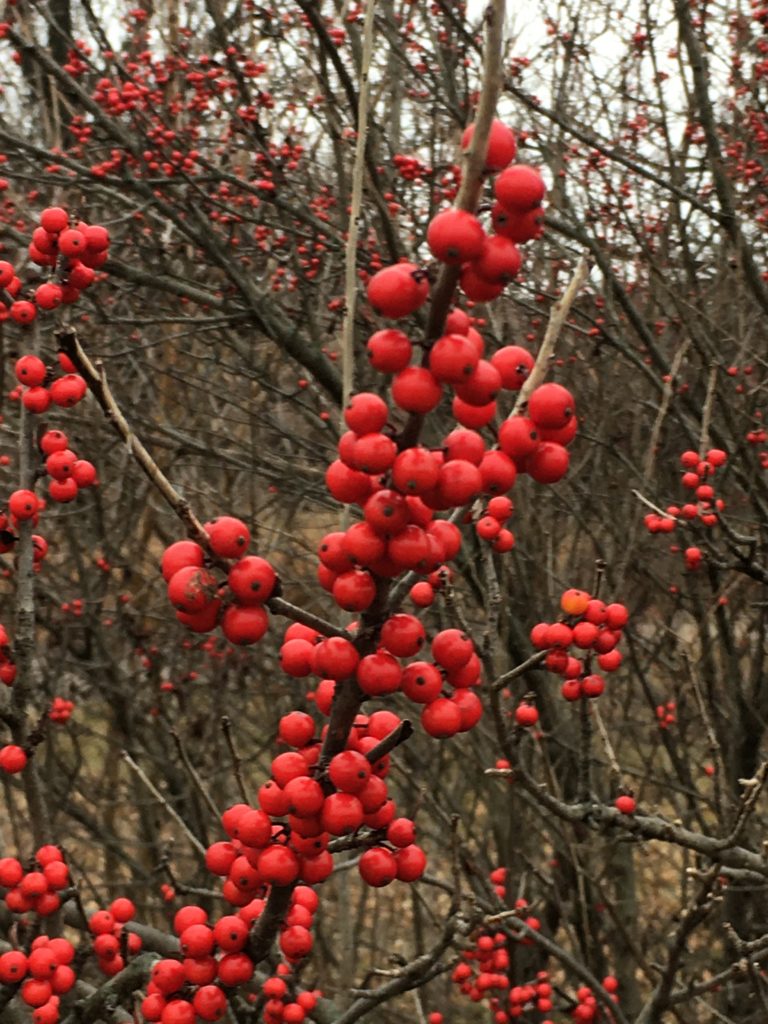
‘Red Escort’ – This is a male selection (pollinator) with glossy leaves and a habit to 20′ tall.
‘Warren’s Red’ – This cultivar grows on the eastern border of the Arboretum parking lot. It is very hardy and consistently produces fruit. It is more shrub-like and upright, ultimately reaching 15’ tall.
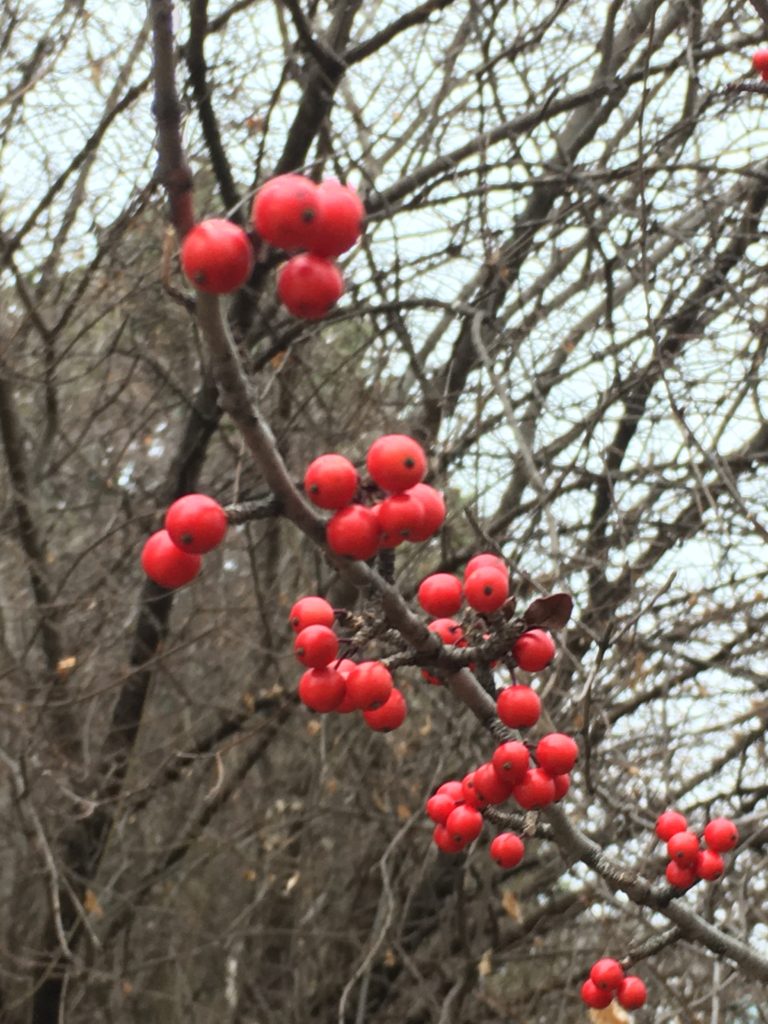
‘Sundance’ – Nice tree form to 10’ tall and 8’ wide. It has the longest lasting fruit, which is orange-red.
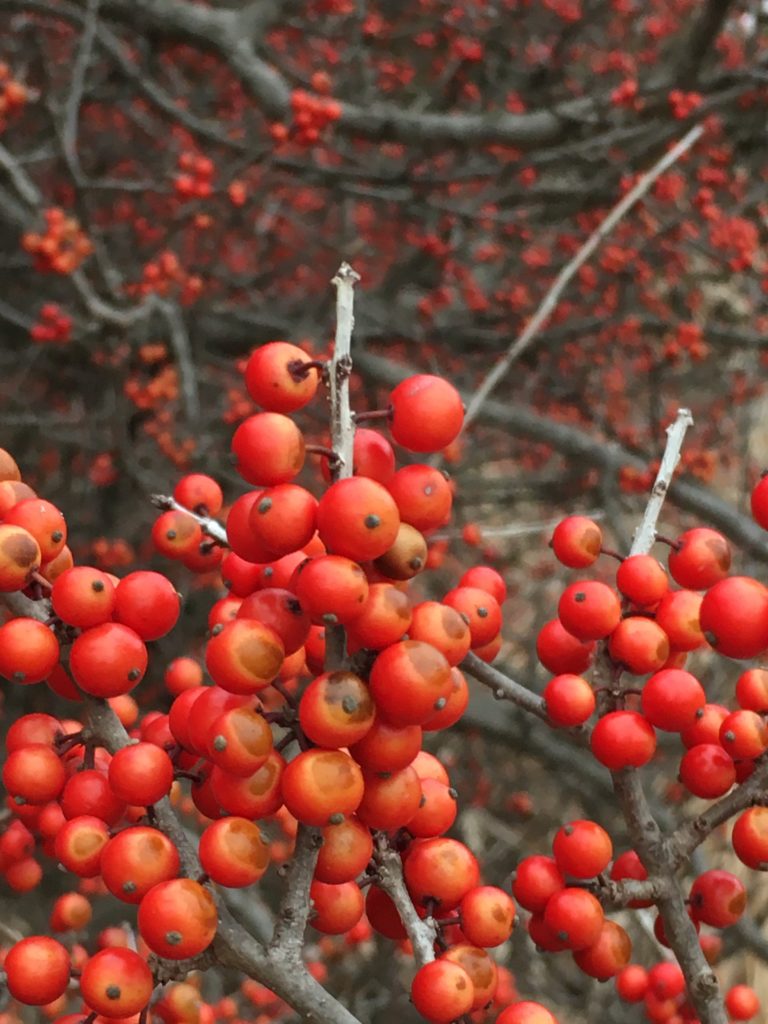
We are planning to have several deciduous holly varieties at our spring FloraKansas Native Plant Festival. Check out our Native Plant Guide for these cultivars along with Ilex verticillata varieties. Each will give you great winter color and habitat for the landscape. We love their hardiness and toughness as well as the beautiful fruit. Why not give them a try?

